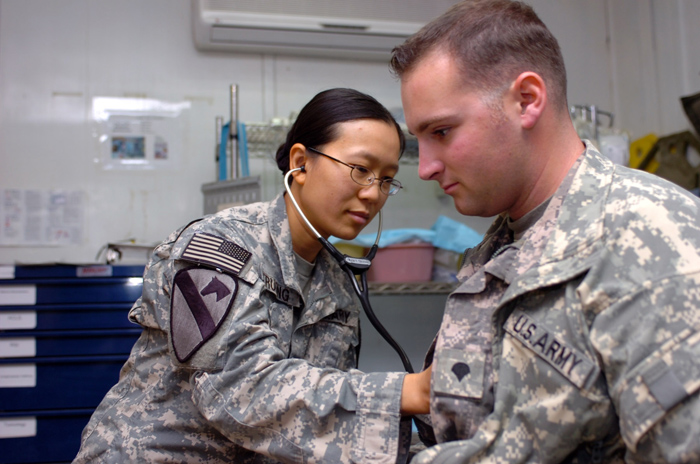Taking Care of Soldiers Benefits Civilians Too

For over two centuries, the medical advancements of the U.S. Army have benefitted millions of warfighters and civilians. Preventing illnesses from yellow fever to malaria to influenza, the Army has faced great challenges in trying to secure a nation despite attacks from enemies that could not be seen with the naked eye.
"Since 1775, America's medical personnel have stood shoulder to shoulder with our fighting troops," said Lt. Gen. Patricia D. Horoho, surgeon general of the Army. "They are ready when called upon to put their lives on the line to care for our wounded Soldiers. Often this care translates to benefits for the civilian world as well."
From vaccine development to casualty evacuation, many methods considered common medical practice throughout the world today originated from military innovation. During the American Revolutionary War, the U.S. military immunized its army against smallpox and developed ways to construct isolation wards to guard against cross infection. During the War of 1812, improvements continued when the Army was ordered to vaccinate instead of inoculate its troops to prevent smallpox - a milestone in military preventive medicine that continues to this day. However, widespread vaccination is only one facet of military medical protocol that has transcended the barracks and battlefields to become a modern medical standard.
In 1819, the surgeon general ordered the collection of troop records regarding sickness and mortality to collate the data and compare among geographical areas. These reports led to the first widespread American health statistics, published in 1840. The compilation of this valuable data prompted research that would overcome various health problems in both the military and the civilian sector. At the end of the 19th century, military research led to the discovery that tropic anemia in the Caribbean was caused by a hookworm. Using this knowledge, Army researchers developed a successful drug therapy combined with an effective prevention and control program that reduced the endemic disease to a sporadic occurrence for hundreds of thousands of people at risk.
Circa 1910, military scientists developed the process of chlorination to purify drinking water for Soldiers in the field, and this technique became the basis of water purification throughout the world. During World War II, military studies of whole blood preservation led to the development of kits for sterile collection of blood from donors, and for the rapid typing of blood ' globally used today in emergency medical treatment.
In recent years, the Army's MEDEVAC system, which involves transporting battlefield victims to military hospitals, has helped to define the current practice of "life-flighting" civilian patients with traumatic wounds to hospitals via helicopter directly from the accident scene.
Tourniquets, shunts, local hemostatic dressings, and various other medical items are going from the battlefield, sometimes directly, into civilian practice. Military doctors with their invaluable experience are coming out of the Services and bringing their knowledge into the civilian sectors.
"The partnerships that academia forms with private industry and government allow us to develop ideas and products for success," said Horoho. "These partnerships, which include research into facial reconstruction, burn treatment, healing without scarring, limb salvage and limb reconstruction, can result in effective treatment and rehabilitation for those Service members and civilians who have suffered traumatic injuries."
Today, the Army continues its work of medical research that may be translated into effective medical practice for the civilian sector. Recent accomplishments over the past decade include a Malaria Rapid Diagnosis Device, which is being used to help prevent approximately three million deaths claimed by this disease annually, and a Japanese Encephalitis vaccine to halt the spread of this deadly disease throughout Asia and other parts of the world. Army-developed products to be used by civilians in the future include the CO2 Generator, the Bed Net, and the Environmental Sentinel Biomonitor.
From cancer and HIV research to the development of advanced prosthetics, the Army's medical research programs have helped to advance the "state of the science" for civilian medical facilities and practitioners across the U.S. and throughout the world. The establishment of a regenerative medicine program to treat severely wounded and disfigured Soldiers returning from combat also provides hope to civilian trauma patients in communities everywhere. It is this hope that continues to drive the field forward.
"The medical advancements made by our military medical personnel helps not only our men and women in uniform, but potentially every family and child on the playground as well, everywhere in the world," said Horoho.














